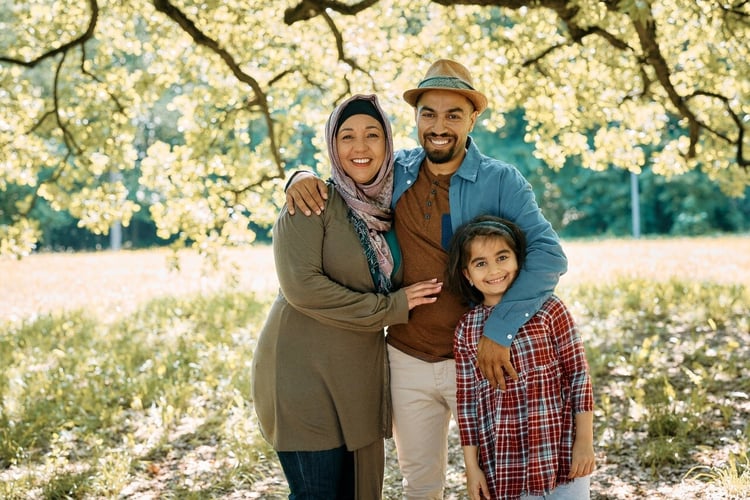How Does the Immigration Process Work? A Guide to US Family-Based Affirmative Immigration

Introduction: Understanding the US Immigration Process
The path to becoming a legal resident or citizen of the United States can often feel like navigating through a labyrinth. With numerous forms to fill out, legal requirements to meet, and timelines to consider, the process can be overwhelming. This is especially true when you're trying to bring your family into the country. If you find yourself asking, "How does the immigration process work?" you're not alone. This comprehensive guide aims to demystify the complexities of the U.S. immigration system, focusing specifically on US family-based affirmative immigration. By the end of this article, you'll have a clearer understanding of the steps involved, the documents required, and the challenges you might face.
Overview of Family-Based Immigration
When people talk about coming to the United States, there are several pathways they might consider. One of the most common and straightforward routes is through family-based immigration. But what does "affirmative" mean in this context? In the realm of U.S. immigration, "affirmative" refers to proactive steps taken by individuals who are not currently facing deportation or removal proceedings. In simpler terms, you're either outside the U.S. looking to come in or already in the country and seeking to adjust your status without being under the threat of deportation. This guide will focus on this specific type of immigration, helping you understand how to initiate the process, what to expect along the way, and how to prepare for potential challenges.
Eligibility Requirements for Family-Based Immigration
Before diving into the nitty-gritty of forms and interviews, it's crucial to determine if you're eligible for family-based immigration. The first step in this process is identifying a family member who can act as your sponsor.
Who Can Be a Sponsor?
In the context of U.S. immigration, a sponsor is typically a family member who is either a U.S. citizen or a lawful permanent resident (green card holder). This individual takes on the responsibility of filing the initial petition on your behalf and vouching for your credibility and intentions. It includes:
- U.S. citizens
- Green card holders
Who Can Be Sponsored?
The range of family members who can be sponsored varies depending on the status of the sponsor. Here are the categories of family members who can typically be sponsored:
- Spouses: Whether you're a U.S. citizen or a green card holder, you can sponsor your spouse for immigration benefits. Of course, there are significant differences in the process if you are a citizen vs a resident.
- Children: This includes both minor and adult children, although the requirements and timelines may differ. It’s important to remember that even marital status can impact eligibility.
- Parents: Only U.S. citizens who are at least 21 years old can sponsor their parents.
- Other Close Family Members: U.S. citizens can also sponsor their siblings and, in some cases, their fiancés.
The Application Process: A Step-by-Step Guide
Navigating the U.S. immigration system requires a meticulous approach, especially when family is involved. The application process can be broken down into several key steps, each with its own set of requirements and timelines. In this case let’s take the example of Kimberly and Jorge, a newlywed couple hoping to help Jorge obtain residency.
- Completing the Immigration Forms
When Kimberly decided to sponsor her husband Jorge for a green card, the first step was to complete the necessary immigration forms. The primary form for family-based immigration is the I-130, Petition for Alien Relative. This form asks for detailed information about both the U.S. citizen sponsor and the foreign relative. Kimberly had to ensure that all questions were answered honestly and accurately, as any discrepancies could lead to delays or denials.
Even though Jorge has been out of status for more than a decade, the fact that he entered lawfully on a tourist visa at the time means that he can file an Adjustment of Status and wait for his residency process while remaining in the U.S. with his family. In addition to the I-130, Jorge will need to complete the I-485, Application for Permanent Residency, as well as the I-765 for a work permit and the I-131 for a travel document. Jorge and Kimberly are very fortunate that they are eligible for this process – others face years-long delays while waiting for consular interviews abroad, if they’re eligible for any benefits at all.
How Kimberly and Jorge CollaboratedKimberly took the lead in filling out the I-130 form, but she needed Jorge's input for sections that pertained to him and all the I-485, such as his employment history and previous addresses. They double-checked all the information to ensure its accuracy before submitting it. Finding all of Jorge’s past addresses took a lot of time and effort, as did his extensive employment history. It’s important not to leave anything out.
2. Gathering and Submitting Required Documentation
What Documents Did They Need?In addition to the I-130 form, Kimberly and Jorge had to gather various supporting documents. These included their marriage certificate to prove their marital relationship, Jorge's passport and visa to show lawful entry, and Kimberly's proof of U.S. citizenship, such as her birth certificate or passport. They will also need to prove that their marriage is real or “bona fide.” The most common documents to prove a bona fide marriage typically include joint bank statements, marriage certificates, joint lease agreements, and photographs of the couple together at various events. Less common yet effective documents could include joint utility bills, pet ownership papers, travel itineraries, and affidavits from friends and family vouching for the relationship.
The Importance of Making CopiesKimberly made copies of all documents and organized them meticulously. She knew that losing even one crucial paper could jeopardize the entire process. They kept the originals in a safe place and submitted the copies along with the original USCIS forms I-130, I-485, I-765, and I-131. We’ll say that again to make sure it’s clear: send copies of documents and originals of the forms; keep original documents and copies of the forms.
- The Waiting Part
About two weeks after filing their application packet, Jorge and Kimberly received a receipt notice from USCIS indicating that the applications have been accepted and the government cashed their check. But before the agency could get much further into its investigation, Jorge would need to attend a biometrics appointment at an Application Support Center (ASC). At this appointment, Jorge will have his fingerprints taken by government officers to complete a full background check. It’s a good thing Jorge disclosed everything, failing to do so could cause all sorts of problems.
Preparing for the InterviewBecause Kimberly and Jorge have only been married for 18 months, they knew they would have an interview with an immigration officer. Jorge was understandably nervous, but Kimberly helped him prepare by reviewing the questions they were likely to be asked. They also gathered additional and updated supporting documents, like joint bank statements and photos, to further prove their genuine marital relationship. Jorge and Kimberly knew they would likely be separated during their interview and asked dozens of the same questions to compare their answers. One inconsistency could mean a denial, or worse.
The Day of the InterviewOn the day of the interview, both Kimberly and Jorge arrived early at the USCIS office. They brought their appointment notice to get through security. They were interviewed separately to verify the authenticity of their marriage. Jorge was asked about how they met, their daily life, and his lawful entry into the U.S. The officer also asked more personal questions like how he proposed, where he purchased Kimberly’s engagement ring, and what the two of them had for dinner the night before. Thanks to their preparation, the interview went smoothly.
- Understanding the Immigration Timeline
The immigration process is not quick, and Kimberly and Jorge knew this going in. After submitting the entire adjustment of status packet, they had to wait more than a year just to get the interview notice. Then came the waiting period for the decision, and eventually the green card issuance. They kept in touch with their immigration attorney to get updates and understand what to expect at each stage.
How Long Did It Take?In Jorge's case, because he had entered the U.S. lawfully and they had all their documentation in order, the process took about a year from the I-130 submission to receiving the green card. However, they understood that timelines could vary depending on various factors.
Conclusion: Successfully Navigating the U.S. Immigration Process
Kimberly and Jorge's journey through the U.S. immigration process was filled with paperwork, waiting periods, and a bit of anxiety. However, with careful planning, attention to detail, and a little patience, they successfully navigated the system. Their story serves as a testament that with the right information and support, the path to family-based U.S. immigration is achievable. Remember, you're not alone in this journey, and there's help available to guide you through each step.



